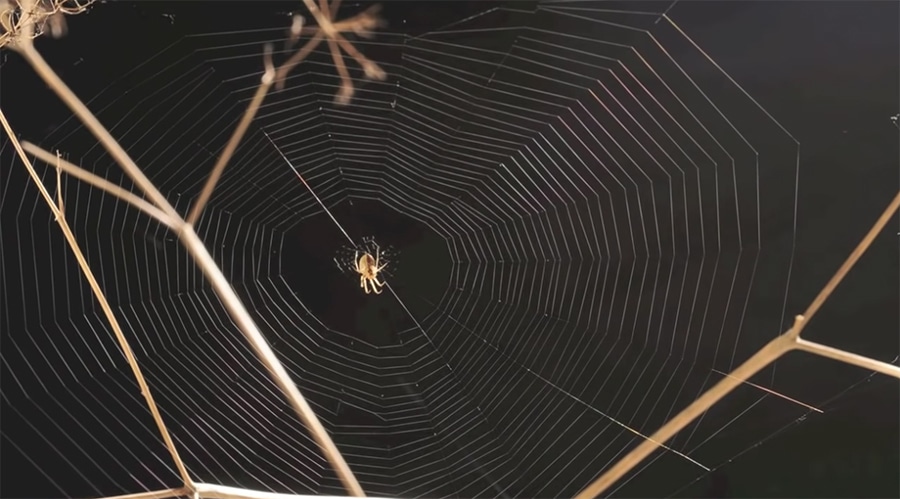Watch this industrious spider construct an orb web for catching insects. The video is another delightful time-lapse from YouTuber Neil Bromhall. An image was taken every 30 seconds, catching the web build over an hour and a half. He explains:
“The spider ate the web when it was destroyed by rain water and built a new one. I think the rain drops damaged the web by making the threads stick together and the spider realising that the web could be seen by insects it would not be an efficient trap, so the spider simply made a new one.”
Plus, some details on orb web construction from wikipedia:
During the process of making an orb web, the spider will use its own body for measurements.
Many webs span gaps between objects which the spider could not cross by crawling. This is done by letting out a first fine adhesive thread to drift on the faintest breeze across a gap. When it sticks to a suitable surface at the far end, the spider will carefully walk along it and strengthen it with a second thread. This process is repeated until the thread is strong enough to support the rest of the web.
After strengthening the first thread, the spider will continue to make a Y-shaped netting. The first three radials of the web are now constructed. More radials are added, making sure that the distance between each radial is small enough to cross. This means that the number of radials in a web directly depends on the size of the spider plus the size of the web.

After the radials are complete, the spider will fortify the center of the web with about five circular threads. Then a spiral of non-sticky, widely spaced threads is made for the spider to easily move around its own web during construction, working from the inside out. Then, beginning from the outside in, the spider will methodically replace this spiral with another, more closely spaced one of adhesive threads. It will utilize the initial radiating lines as well as the non-sticky spirals as guide lines. The spaces between each spiral will be directly proportional to the distance from the tip of its back legs to its spinners. This is one way the spider will use its own body as a measuring/spacing device. While the sticky spirals are formed, the non-adhesive spirals are removed as there is no need for them anymore.
We found this after finishing Charlotte’s Web.
Watch this next: Spiders Tune Their Webs Like A Guitar.Curated, kid-friendly, independently-published. Support this mission by becoming a sustaining member today.

